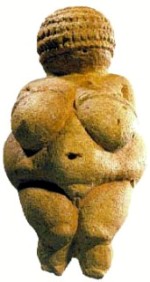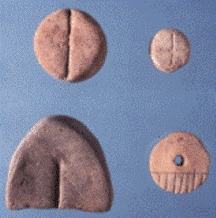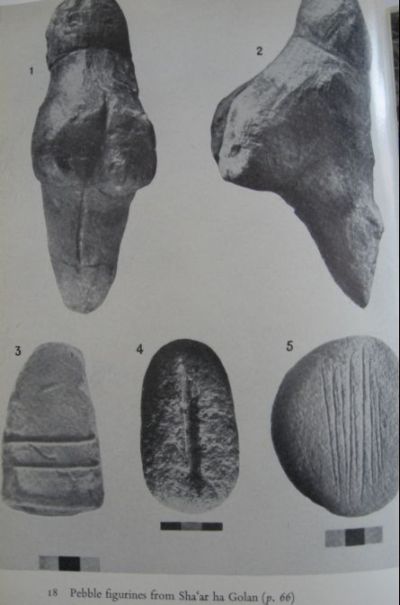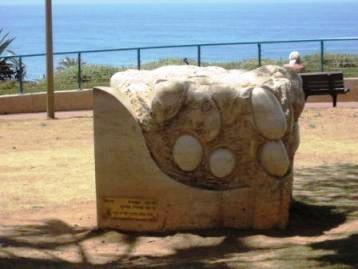Iakov Levi
The Stone as Mother
Supplement
of Myth and the
Cloacal Theory
July 24, 2008
Published
in
Mentalities/
Mentalités - an interdisciplinary journal-
volume 22:1, 2008, The Institute for the
History of Mentalities, Outrigger Publisher,
they, their kings, their princes,
their priests, and their prophets,
who say to a tree, "You are my father,"
and to a stone, "You gave me birth" (Jeremiah,
2:27)
Sticks
and stones will break my bones but words...will never hurt me!!
Part I. The Scriptural Text as Mythical Evidence
As we have noted in Myth and the Cloacal Theory , according to Greek myth stones are children. According to psychoanalyst Theodor Reik, stones are the original and most archaic form in which gods were worshipped. Stones were the gods. This is no contradiction. Our unconscious works by condensation. In "The Moses of Michelangelo and the Events on Sinai"[1], Reik shows that the tablets of the Law (luchoth ha-brit), namely two stones, represent Jahveh and Moses. Reik emphasized that the tablets of the Law, being two, represented God the Father and God the Son.
It is very convincing
because of the general context: the Golden Calf and the unfolding of the story,
in which the children of
However, it seems to me, that it is more accurate to make an interpretation of altars as the symbol of the Mother. Stones are a material, like wood, a primeval substance. And Freud indeed interpreted materials as symbols of the woman [matter = mater] , which is the primal material from which everything is made[2]. Especially since we are dealing with an altar which is a flat object, like a table. And tables are a classic woman symbol[3]. It also fits Freud's intuition that the first deity was a Mother, than a Son - god, and only ultimately a Father - god: "The series of gods, then, would run chronologically: Mother Goddess -Hero - Father God"[4].
Accordingly, the most archaic deity - the stone - is a symbol of the Mother. Furthermore, symbols are not allegories. The symbol is the real thing. It encapsulates all the original charge of libidinal energy. Therefore, the tablets of the Law, which the text explicitly calls: "tables of stone with the law and the commands" (Ex. 24:12), are not only the symbol of the two gods Jahveh and Moses, as sustained by Reik, but also the symbol of the woman - The Mother. As suggested before, there is no contradiction because our unconscious works by condensation. The ultimate result of the representation is an equilibrium between all the energies acting in the field of our psychical needs.
The same story condenses also traces of another pivotal psychic moment. Moses, like Prometheus, climbs the mountain in order to steal something from god and to deliver it to the primal Brotherhood Horde. This psychic moment is an essential element of the sagas of the heroes as representative and delegate of the Sons, who climb the mountain in defiance of a paternal image. Moses, then, is the Hebrew version of the classic myth of the Hero, after having been revised and sterilized by the later monotheistic editor.
As I have argued in Maestri and Disciples [5] THE Hero's mission is to rob the Father of his virility - his very penis - in order to deliver it to his brothers. Thus Moses climbs the sacred mountain in order to steal the Father' penis, which in turn is the Mother, as we are also explicitly told by the Greek myth of Aphrodite as Uranus' penis. The biblical story of Eve being born from Adam's rib conceals - albeit in a more distorted way - the same unconscious concept of the woman as a man's penis. As Reik has shown, Adam's rib - from which Eve was born - is a displacement of the penis[6][6].
Now we can really understand the latent meaning of Moses' wrath and his act of destroying the tablets of the Law. In this act of rage he destroys the Father's penis. However, since the libidinal need is directed first of all toward the Mother, the virility - penis of the Father and the Mother - as a libidinal object are condensed into one object.
Now that he has destroyed the tablets of the Law as paternal penis, Moses-the-Hero must reintegrate them because they are the mother. As such they represent the libidinal object. Since fetching it was the purpose of his ascending the mountain in the first place, the primal aim of his mission is to deliver her to his Brothers who are waiting at the foot of the mountain. He is not supposed to disappoint them. And indeed in due course he descends the mountain bringing the Law.
Reik was the first to discover that the Torah (i.e., the Law) is the symbol of the Mother goddess[7], omnipresent in other peoples mythologies and ferociously repressed in Judaism. I have further developed his hunch in On Trees and on Birds (and on Flowers) and in An Obsessive Neurotic Symptom. Thus the Law - Torah - Mother, that once belonged only to the Father, now belongs to the Sons' representative, and he delivers it /her to his brothers
The Torah for Jews is Torat Mosheh, Moses' Law, just as in Christian myth the Logos is Jesus' Law, after that they have captured them from the Father, and made them their own. The Law and civilization belong to Son-gods. as Reik writes: "A characteristic common to all son-gods is worth notice. They are redeemers and bringer of culture"[8] .
Later religions manipulated the
prehistoric archaic and original events in such a way that we adopted the
version of a Merciful Father, who delivers the Law to his sons as an act of
love and benevolence. It is a defence mechanism whose purpose is to maintain in
the repression the original aggressive drive toward the Primeval tyrannical
Father. Not, therefore, as an act of love the Father delivered the Law - penis
- woman to his sons: he was robbed by the Delegate/Incarnation of the Sons. We
all unconsciously share this phylogenic knowledge, which is always repeated
and reinforced in the experience of our first infancy. We all have a vested
interest - fed by an incumbent sense of guilt - in maintaining this knowledge in
the repression.
Part 2. The Archaeological Evidence
And here we have seen how a Mother - Primal Stone ultimately became Stone of the Law and Torah: the tablets of the Law. Now we can look at the evidence in prehistoric art and note that it confirms the kind of psychoanalytic reading we gave to the sacred texts in the first part of this essay.



The first idol The female genital Pebbles in Galilee (Neolithic)
(35000 B.C.) (the two tablets of the Law) [9]. (Kathleen Kanyon, Archaeology in the Holy Land, Pl.18)
Prehistoric stones
and Mothers, dating before the appearance of the first male idols. After that, working by
condensation, stones became children and symbol of the Father.
With the advent of monotheism, the
female element as primeval creator was discarded. However even the monotheistic
editor of the Genesis was unable to completely delete the traces that a
female element was in the beginning. At the very beginning of the story of
Creation we read: In the beginning God created the heavens and
the earth. Now the earth was formless and empty. Darkness was on the surface of
the deep. God's Spirit was hovering over the surface of the waters. (Gen. 1:1-2). This verse
represented a great difficulty to the rabbis, who asked: "Were from the waters
came, after all we are not told that they were created". Namely, the rabbis
perceived that the biblical editor concealed the fact that they pre-existed.
And the waters, as shown by Freud in "Symbolism in Dreams"(cit.), are
the symbol of the mother. Furthermore, the image of God the Father "hovering over the surface of the waters" is
equivalent to Greek myth in which Uranus, the Greek primeval male god,
copulates lying on Gea, the Mother Earth. A male god, who "hovers" on a female
element. This legend belongs to the psychic layer in which the existence of a
male god is recognized, and is placed side by side with the female element.
Both create the world in partnership.
In post biblical generations, the perception that something essential had
been censored from the original text began to press for a recognition of the
repressed truth. The Jewish legend tells: Three elements existed before
Creation: the water, the wind, and the fire. The water conceived and gave birth
to the darkness. The fire conceived,
and gave birth to the light The wind conceived,
and gave birth to wisdom
( Exodus Raba 15:22)[15] . We can thus see that conception of primeval
elements which preceded Creation surface in post- biblical literature. Even if no
rabbinical source ever dared to imply that these primeval forces by a feminine
nature preceded God himself, it seems to be implicitly hinted. In the mystical and secret writings
of the Kabala, more and more a female substance is attributed to the Creator (Shechinah)
, and in the book of Zohar is explicitly said that god had a wife: Matronit
(3:69). The Torah, the Mother, pressed more and more for her role as the primal
maternal deity. In the legends we are told: In the beginning, two thousands
years before the heaven and the earth, seven things were created: the Torah
written with black fire on white fire, and lying in the lap of God [...] When God resolved upon the
creation of the world, He took counsel with the Torah [...] The advice of the Torah was given
with some reservation. She was sceptical about of an earthly world[...][16]
We can see
that the Torah is indeed a parental instance, like a wife of God, and therefore
mother of man. She underwent a strong process of personification. The Law,
received or captured by Moses on the sacred mountain, was invested of the role
of the Primeval Mother. Since what to the Jews is the Torah,
to Christians is the Word (the Logos), we can now understand the latent
meaning of the first verses of the Gospel of John: Karl Abraham has
extensively written on light as a maternal symbol[17] . After the Greek - Roman
world embraced Christianity, which is a diluted form of monotheism, and
officially renounced the concept of a world created by a Mother deity,
nevertheless, side by side with a Mother goddess in the image of the
Virgin, returned to the most archaic concept of Mother - goddess, from which
all the world was generated: The Word. At the manifest level The Word (Logos)
is the Christ. However the latent and concealed meaning is that the Word is the
Mother. And such is "Light". In the Gospel of John the Logos and the Light
are strictly associated one to the other and to the Christ. So is The Torah, which is
the most archaic deity, and she was delivered to 3. Pulling Things
Together: The Centre of the World And there is more. In medieval maps According to a Jewish
legend recorded in the Midsrashim: The construction of the earth was begun at the centre,
with the foundation stone of the On
the same stone - the very same primal, originary matter/mater - the sacrifice
of Isaac was attempted. For this is indeed the centre of the world. It also
constituted the very altar of the
According to another Midrash, some of the wise men of Israel say that
this stone was called Shetyiah, which in Hebrew also means 'drinking',
because beneath it is hidden the source of all the springs and fountains from
which the world drinks its water[21]. Again, the water - maternal symbol and
primal source of all life - is mentioned in association with the foundation
stone.
Moreover, the sages of The Almighty created the world in the same
manner as a child is formed in its mother's womb. Just as a child begins to
grow from its navel and then develops into its full form, so the world
began from its central point and then developed in all directions. The navel of
the world is The three great monotheistic religions
show this centre of the world (axis mundi, as Mircea Eliade calls it) in
The young Son - gods and their punishment Prometheus' rock and Isaac's
altar are of the same: the material (substance) of our Primeval Mother. And is
no accident that the young son-gods are almost always punished by being bound
to a rock. In our unconscious, the substance of the punishment must always be
associated with the substance of the sin. Prometheus stole something from the
gods in order to deliver it to men. And this something is the woman, namely,
the libidinal object. In Greek myth the libidinal object stolen by Prometheus
is called 'fire'. However if we return to the Jewish Midrash mentioned
before, it says: "The fire conceived, and gave birth to the light". Therefore, the fire, too, is
unconsciously perceived as being of a female nature. And it is no accident that
in Hebrew fire (Esh) is feminine. Thus we can reconstruct the original
archaic myths as follows: Prometheus stole the fire and was tied to a rock to
consummate his punishment. At Sinai, Moses stole the tablets of stone, and was
punished being forbidden to enter the Promised Land, which is another symbol of
the Mother. The text does not associate this punishment to the events on the THERE ARE four legends concerning Prometheus: Creation
The
endogenous perception that in the beginning everything was created from a
feminine element without the help of any male agent, is very vivid in classical
Greek mythology, and in the ancient myths of the East. Peoples began to add a
male companion only later. With monotheism, the female element was totally
discarded in favour of a male creator.
In Sumerian myth the
This myth is equivalent to
Homer's version, who says that Ocean was 'the origin of the gods' and 'the
origin of everything'. From Ocean came Tetis, who was named 'Mother'[11].
An Orphic myth told that in the beginning was The Night. She had the aspect
of a bird with black wings. (on the female phallic nature of birds, see
The Israelites and the Quails). She deposed a silver egg. From it limped Eros,
named Protogonos, the generator of the gods[12]
. Karl Abraham has shown that night and
darkness are symbols of the maternal womb[13].
And so on Hesiod, who tells that in the beginning was
Chaos, then Gea (Earth) by the ample breasts. Then Herebus and the Night[14].
These are all Mother symbols.
In the beginning was the Word,
and the Word was with God, and the Word was God. The same was in the beginning
with God. All things were made through him. Without him was not anything
made that has been made. In him was life, and the life was the light of
men. (1:1-4)In subsequent Christian representations Christ is tied to a
column in order to be flogged. At the manifest level the column is represented
in visual art - in frescoes and in paintings - because of its association to
Jesus' flogging. However, as I argued earlier in Myth and the Cloacal Theory , the real unconscious association is much more archaic, and
reconnects to the image of the column as primeval stone.
In Christian myth, the Christ is tied twice to a maternal
symbol: first to the stone column, in order to be flogged, and thereafter to
the wooden cross in order to be crucified. The cross is the Tree of Life. As I
have shown in On Trees and on Birds (and on Flowers),
trees, like stones are archaic symbols of the Father and of the Mother,
according to the context. It is a repetition. As we are so used to experiencing
in myths and in dreams, the same concept repeats itself twice over. The tree,
like the stone, is the Torah. So says Rabbi Shimon Bar Yiochai: "Every tree represents the Torah" (Bereshit
Rabah 12:6). In the Midrash (Jewish legends), the Torah is in fact
associated thirty-five times to the Tree of Life. And stones and trees are
supposed to give life and birth, as quoted in Jeremiah, 2:27.
Now we can adventure into a timid trial of
penetrating the latent meaning of the poet's words, that so much speak to us,
and so little we understand. As quoted above (in Myth and the
Cloacal Theory), Kafka wrote:
According to the first, he was clamped to a rock in the
According to the second Prometheus, goaded by the pain of the tearing beaks, pressed
himself deeper and deeper into the rock until he became one with it.
According to the third his treachery was forgotten in the course of thousands
of years, forgotten by the gods, the eagles, forgotten by himself.
According to the fourth everyone grew weary of the meaningless affair. The gods
grew weary, the eagles grew weary, the wound closed wearily. There remained the
inexplicable mass of rock. The legend tried to explain the inexplicable. As it
came out of a substratum of truth it had in turn to end in the inexplicable
[24] .
Freud spoke of a death- urge (Todestrieb). This is
the most basic drive of the living cell. After all, life is a disturbing event
in the permanent status of inorganic matter. Due the conservative substance of drives,
the first urge of the living cell, as of the new born baby, is to return to the
previous status. In short, the first drive of the human being is to return to
the previous status, which was before birth.
Melanie Klein confirmed Freud's hunch. In her
psychoanalysis of children, she discovered that the Todestrieb, namely
the impulse of the new-born to break back into its mother's womb is there
indeed. Humans go forward, and if their life proceeds in a psychosexually
correct way, they soon successfully repress this first deathly impulse.
However, if a hostile environment hinders the child's correct psychosexual
development - such as a severe lack of affection - s/he tends to regress to a
previous psychosexual level. In the most extreme case the child regresses
psychosexually to the status previous to life itself. Then, s/he may well
commit suicide. The unconscious aim is to melt back into the mother's womb. To
cease to be oneself, as a separate aching unit, and to be one in the material
(matter/mater) which generated him. That primal separation involved pain, and
now that life is too hard to sustain, the primeval pain is activated again, in
order to be relieved and solved by the fusion in the primeval matter, a
regression which invalidates the pain of life.
Now that we have discovered the meaning of the rock as the
primeval Mother, we can reconnect the poet's words: " Prometheus,
goaded by the pain of the tearing beaks, pressed
himself deeper and deeper into the rock until he became one with it".
It is the unsustainable pain of his new situation which goads him to regress
into the rock - that is, into maternal womb. And we can finally understand the
archaic poet's conclusions too: "There remained the
inexplicable mass of rock. The legend tried to explain the inexplicable. As it
came out of a substratum of truth it had in turn to end in the inexplicable."
Well, have we or have we not explained the inexplicable?
[End of the article]
Addendum
Shlomit Averbuch The sculpture of Ashtoret (The Canaanite fertility goddess Astarte ) in Netanya.

Astarte - the Goddess by the many breasts
A very interesting link: The Stone Mother by Sara Rosenbaum
And now...from a
A Paiute Legend of the Stone Mother of Pyramid Lake, in Native Nevada Classroom
[...]
The woman felt so bad that she began to weep bitterly. She missed her children so much, but remained with her children, the Paiutes. The Paiutes grew into a strong tribe and became the most powerful group in the country. But the Paiute mother still grieved for her lost children, especially the Pitt River Indians, who were so poor that she cried more and more each day.
http://www.unr.edu/nnap/NT/st-4_5.htm
One day, she decided to sit near a mountain where she could look towards the Pitt River Country. She sat there day after day and she cried and cried. Her tears fell so fast and so much that they formed a great lake beneath her. This body of water became Pyramid Lake. She sat there so long she turned to stone. There she may be found today. She is the stone mother of Pyramid Lake and she carries her burden basket at her side.